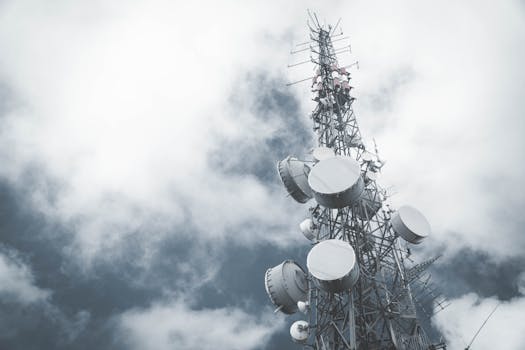
Updates from Above: Essential Insights into the Latest in Satellite Telecommunications – Satellite
Satellite telecommunications has become an indispensable part of modern communication, connecting people and devices across the globe. With the rapid advancement of technology, the satellite industry is undergoing significant transformations, driven by innovations in spacecraft design, launch systems, and ground infrastructure. In this article, we will delve into the latest updates in satellite telecommunications, exploring the key developments, trends, and challenges shaping the industry.
Advancements in Satellite Technology

The satellite industry has witnessed tremendous growth in recent years, with significant investments in research and development. One of the most notable advancements is the development of high-throughput satellites (HTS), which offer faster data speeds and greater capacity than traditional satellites. HTS technology has enabled the widespread adoption of satellite-based broadband services, particularly in remote and underserved areas where traditional terrestrial infrastructure is lacking.
Another area of innovation is the development of small satellites, also known as CubeSats. These tiny satellites, typically weighing less than 1.33 kilograms, are designed to be launched at a lower cost and with greater frequency than traditional satellites. Small satellites have opened up new opportunities for scientific research, technology demonstration, and commercial applications, such as Earth observation and communication services.
Emerging Trends in Satellite Telecommunications

The satellite telecommunications industry is experiencing a significant shift towards the adoption of hybrid networks, which combine satellite and terrestrial technologies to provide seamless and ubiquitous connectivity. This trend is driven by the growing demand for high-speed and low-latency communication services, particularly in the maritime and aviation sectors. Hybrid networks offer a reliable and efficient solution for connecting remote and mobile assets, enabling real-time communication and data transfer.
Another emerging trend is the use of satellite-based Internet of Things (IoT) services, which enable the connection of devices and sensors in remote and hard-to-reach areas. Satellite-based IoT has numerous applications, including asset tracking, environmental monitoring, and smart agriculture. As the number of connected devices continues to grow, satellite-based IoT services are expected to play a crucial role in supporting the development of intelligent and interconnected systems.
Challenges and Opportunities in the Satellite Industry

Despite the many advancements and trends in the satellite industry, there are several challenges that need to be addressed. One of the major concerns is the issue of space debris, which poses a significant threat to the safety and sustainability of satellite operations. The growing number of satellites in orbit has increased the risk of collisions and fragmentation, highlighting the need for responsible and sustainable practices in the industry.
Another challenge is the need for regulatory frameworks that support the development of the satellite industry. The current regulatory environment is often fragmented and inconsistent, creating barriers to entry and innovation. There is a growing need for harmonized and forward-looking regulations that promote the safe and responsible use of satellite technology.
Conclusion

In conclusion, the latest updates in satellite telecommunications offer a glimpse into a rapidly evolving industry, driven by technological innovation, emerging trends, and shifting market dynamics. As the demand for satellite-based services continues to grow, it is essential to address the challenges and opportunities facing the industry, from space debris and regulatory frameworks to the development of hybrid networks and satellite-based IoT services. By staying ahead of the curve and embracing the latest advancements in satellite telecommunications, we can unlock the full potential of this vital technology and create a more connected and sustainable world.
See more:
